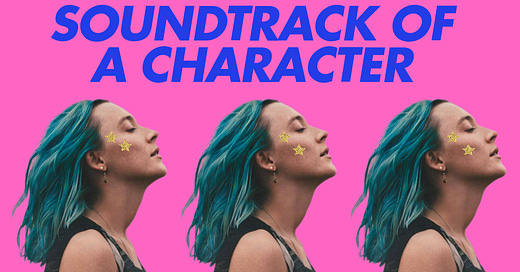Soundtrack of a character : Interview with The Outrun's music composer John Gürtler
The Outrun, a film adaptation for Amy Liptrot’s memoir is out on theaters this week. I’ve had the chance to see it, and one thing stood out for me is the soundtrack and the way it conducted my perception of the film and its main character, Rona, from start to finish. A soundtrack that swings between two very different worlds, orchestral music and electro/club one following the story of character that is non linear and that oscillates between the past and the present.
After watching it, I immediately looked for the soundtrack on YouTube and Spotify and kept listening to it until I found myself writing down questions and emailing them to both music composers John Gürtler and Jan Miserre asking one of them how they crafted it. Here is the full interview of how the soundtrack for The Outrun was made. If you are a musician who wants to make it to the film industry, we highly recommend you to read John Gürtler’s notes and answers on this work.
When it comes to making movie soundtracks, you usually work as a binôme with Jan Miserre. Tell us about how you approach a project of making a soundtrack for a film, do you usually intervene during or after filming?
Whenever possible, we prefer to compose and produce first drafts before filming begins. With only a script and conversations with the director, the creative mind is free to explore ideas that are uninfluenced by the finality of a completed film shoot, raw footage, or a rough cut. This approach allows the composer to envision their own interpretation of how the story might look, feel, and most importantly, sound. The advantage here is that music and film are independent art forms, and the more fully realized each element is, the greater the potential for a truly symbiotic relationship.
This is not the first time you work with Director Nora Fingscheidt. For the outrun soundtrack, you had to create a score for a story that is non linear, that swings between the present and moments from the past for a protagonist that struggles with addiction and wants to get better. What information, description or notes Nora gave you while making the soundtrack?
We had the opportunity to read Amy Liptrot’s memoir well in advance of filming, which afforded us ample time to develop musical and sound concepts, collect material, and record initial drafts. Nora shared her thoughts on the main character's battle with “cravings”—that magnetic pull a recovering addict feels toward a substance throughout the day. Often, those grappling with addiction or mental health issues appear highly functional to others while silently enduring inner turmoil. We sought out internal sounds that could convey Rona’s inner struggle and the physicality of addiction, guiding the viewer through the film’s non-linear storytelling. Some of these sounds are deliberately subtle, forming a backdrop from which the more emotional and expressive themes arise.
When we watch the film and listen to the soundtrack, sonically speaking it switches back and forth between these beautiful symphonies/orchestral music to electro/club one, they respectively intervene when Rona is in Scotland and in London. Can you explain why you used these two very different types of music?
Director Nora Fingscheidt also requested that we produce some electronic tracks for the film, enabling a seamless blend between the more organic, nature-inspired themes and the grittier, London-based soundscapes. She envisioned the ecstasy of dancing in a London club as something that should parallel the euphoria of connecting with nature. To capture this, we established a link between the tracks “Arise” and “The Long Way Home.” Rona’s flashbacks are frequently triggered by music, and it’s often the electronic tracks that transport her back to London. As the film progresses, the score transitions from a mix of electronic and acoustic sounds to a more natural tone, mirroring Rona’s increasingly clear state of mind.
Some parts of the soundtrack are used as a flashback happening indicator, one that keeps coming back is : Beyond the noise! We noticed that It does come back every time Rona remembers a moment with her former partner maybe indicating tenderness, Can you confirm or deny that?
Yes, “Beyond the Noise” is Rona and Daynin’s love theme. It also appears in an intimate scene between Rona and her mother in “Tides of Surrender.”
A significant part of the film is set in Scotland, magnificent views. Are there any instruments or sonorities that you used from the Scottish folkloric/traditional music?
We collaborated with Scottish multi-instrumentalist Malin Lewis, who visited our Berlin studio. Their performances on self-crafted bagpipes, fiddle, and mouth harp lent a distinctive sound to tracks like “Corncrake,” “Gyro Nights,” and “Orkney,” complementing the more documentary-style scenes of the film.
How did you come up with the names on The soundtrack list? Is it something that you had total control over or that's something you worked on with Nora and Amy Liptrot (taking in consideration that the screenplay is a memoir adaption)?
We were fortunate to have the creative freedom to com up with our own track titles. The soundtrack includes extended or augmented versions of the score, some of which are faithful to our earliest drafts.
If you had to translate this soundtrack verbally into feelings, sentiments or emotions, how would you describe it from the perspective of a musician who made a soundtrack for that main character (Rona)?
I had a vivid image in my mind of the main character submerged at the bottom of the ocean, enveloped in darkness, with an overwhelming weight pressing down on her. Gradually, she would ascend, break through the water’s surface, and continue rising through the atmosphere and into the cosmos, soaring ever higher. This imagery was inspired directly by Amy Liptrot’s book. Her deep reverence for nature, Norse mythology, and science was profoundly moving and had a lasting impact on us.
Interviewed by Yamina.H




